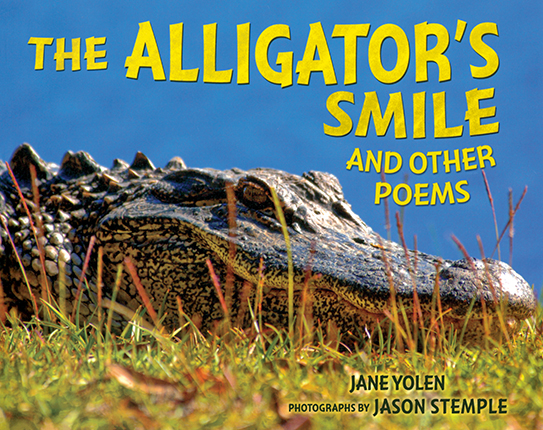Full Text Reviews: School Library Journal - 08/01/2016 Gr 1–5—A fabulous merging of science and poetry, this latest addition from veteran author Yolen provides an up-close view of the American alligator. The poems vary in style, from haiku to limerick, while the photographs of real alligators in their habitats are enticing and chilling. Yolen knows how to create little moments of suspense; in the three-line poem "Seven Words About an Alligator," the first two lines build a slow, steady pace ("Silently floating,/Silently gloating"), making the reversal and the accompanying sense of danger in the third and final line ("Not a log") all the more spooky. Through these verses, readers will learn about alligator nests, teeth, diet, and hunting style, as well as how long these creatures live and how long they have existed (about 80 million years). Fact boxes on each spread expand on the subject of the poem. The lack of an explanation or guide to the poetic style used does not detract from the volume. VERDICT Beware: young readers with an interest in reptiles, science, or poetry are certain to snatch up this work. Recommended for most collections.—Ellen Norton, Naperville Public Library, IL - Copyright 2016 Publishers Weekly, Library Journal and/or School Library Journal used with permission. Booklist - 09/15/2016 The mother-and-son team of Bug Off! Creepy, Crawly Poems (2012) here focus on alligators in 13 poems, each accompanied by sidebar factoids and arresting full-color photographs of the creatures in their natural habitat. The opening “7 Words about an Alligator” (“Silently floating, / Silently gloating. / Not a log”) includes a sidebar explaining the origin of the word alligator and a photo of gator gliding through water. Throughout, poems from droll to dramatic highlight various behaviors, characteristics, and physical traits, such as teeth or a thick hide. Others are written from alligator perspective, like “Kindergarten for Alligators,” where “We learn to read . . . / the reeds.” The sometimes-jaunty tone toward topics may occasionally be disconcerting, as in “What an Alligator Eats” (potentially “your poor pooch” if you’re walking the dog near a bayou), and some vocabulary is sophisticated, though those are generally defined in the glossary. Nonetheless, this is an intriguing blend of wordplay-rich verse, visuals, and introductory information. Additional alligator facts and a list of annotated resources close out the volume. - Copyright 2016 Booklist. Loading...
|



